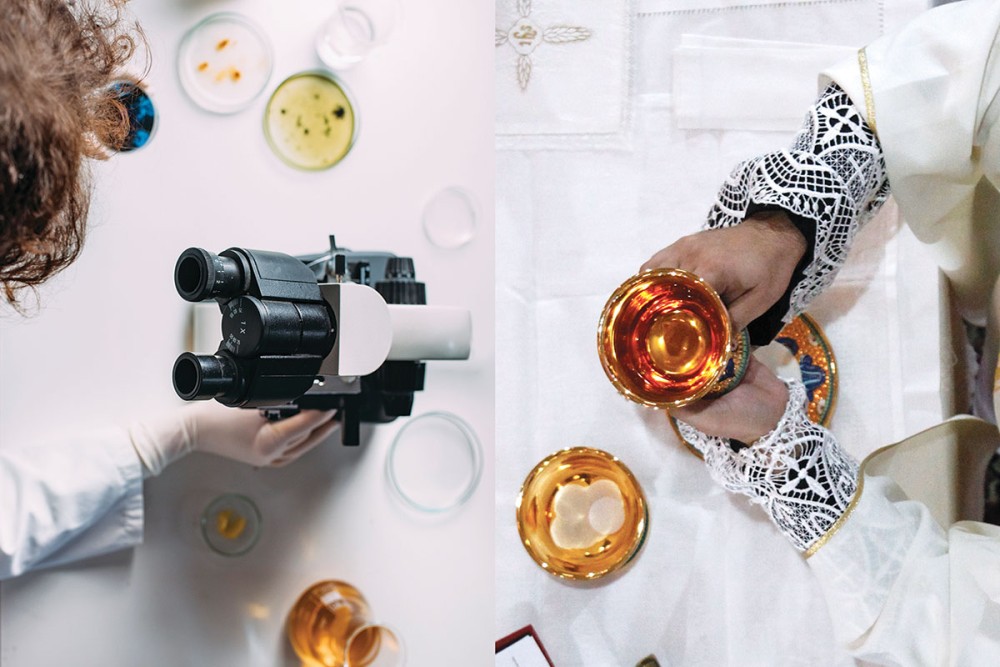Where my faith and my work as a scientist meet
It’s difficult to study the phylogenetic tree and still feel lonely.

Thursday mornings, I’m the first one in the lab. The room never sleeps. I enter to the hum of –20° freezers, eerie blue light from the ultraviolet hood, the whir of thermocyclers digesting DNA. I turn on the lights, don purple latex gloves, and begin.
Sometimes I extract genes: clip the pectoral fin from an ethanol-preserved fish, dissolve it with enzymes, and incubate it in a bath of reagents. Other times, I run gels or perform PCR or write program code on the lab computer. The skills are second nature. My work has a meditative flow of clicking pipettes and spinning centrifuges and endless streams of specimen IDs.
Shortly after ten, I peel off my gloves and walk up the hill to Yale Divinity School. Dozens of people gather in Marquand Chapel for morning worship—worship, that is, in its most flexible and creative sense. We sing in English, but also in Spanish and Xhosa and Hebrew and Portuguese. We pray, but this means raising our hands or walking in circles or reciting poetry or, if you’re so moved, speaking in tongues. The service includes traditional Christian liturgy, too: the Nicene Creed, Anglican hymns with organ music, the chromatic melodies of eucharistic prayers. It feels like we’re performing religious liturgy the way it was always meant to be done: using traditions as a starting point to express the very real joys, sorrows, and prayers of a diverse living community. It’s vibrant, experimental, and unifying.




